Lard croissant. Whom France can send to Ukraine
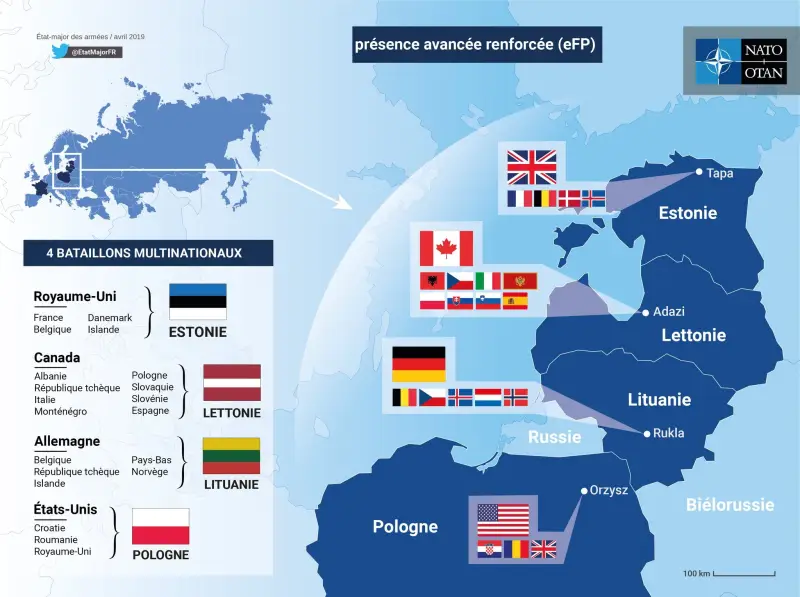
NATO Enhanced Forward Presence Forces. France is participating with its contingent in the formation of a battalion combat group in Estonia.
The number of contingents was announced differently, but usually the figure was 1 fighters. There was also information that the contingent was to consist entirely of soldiers of the Foreign Legion (French Légion étrangère). Subsequently, it was reported that the contingent was supposed to be of a mixed composition - parts of the Foreign Legion and purely French units of the French Ground Forces. Although this is not practiced by the French.
If we take at face value the size of the contingent of 1 fighters, then the information about the contingent in the form of a hodgepodge sounds more than plausible. And there are several reasons for this.
Concept of the use of troops
If you look at the French infantry regiment (in fact, a motorized rifle regiment), it looks rather pale, both in terms of armored vehicles and artillery. The whole point is that this unit itself should not fight. The French do not use individual units, but battle groups - Groupement tactique interarmes (GTIA). That is, an infantry regiment is, although an independent unit, but it should not act alone within the framework of military doctrine, but acts as a “skeleton” on which reinforcement parts (in whole or in its fragments) are strung. Or the regiment itself gives its units to the combat groups. Such groups can be at company, battalion and regimental levels.
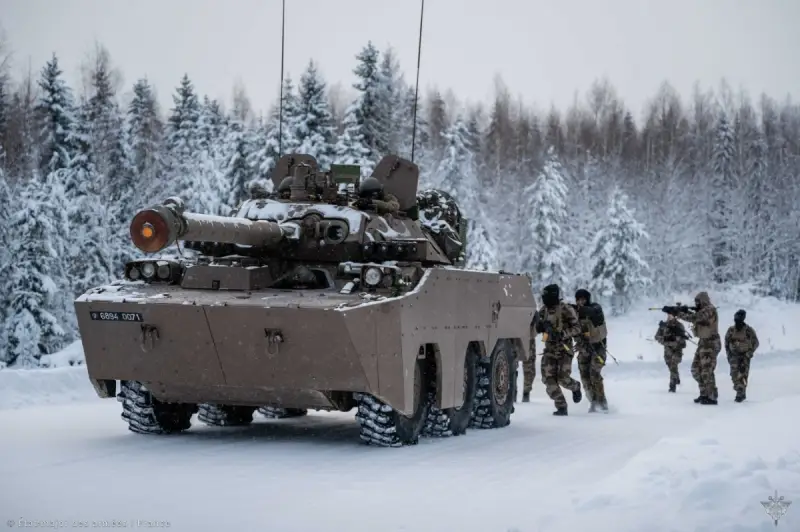
Training of French units in Estonia in December 2023... The border with Russia is a little over 100 kilometers away.
Such combat groups fought in Iraq, Afghanistan, and Africa.
If we are talking about recent events and the situation in Europe, then we can recall the participation of the French in NATO missions under the “Enhanced Forward Presence” (eFP). In 2016, at the NATO summit in Warsaw, it was decided to deploy advanced NATO forces in the Baltic states and Poland. Each country of presence was assigned a “curator” who took command of the local joint NATO contingent.
As for its ground component, it was usually a battalion tactical group of approximately 1 to 000 men. Within the framework of this concept and under the leadership of the British military, the French army takes part in the formation of the BTG in Estonia (mission "Lynx").
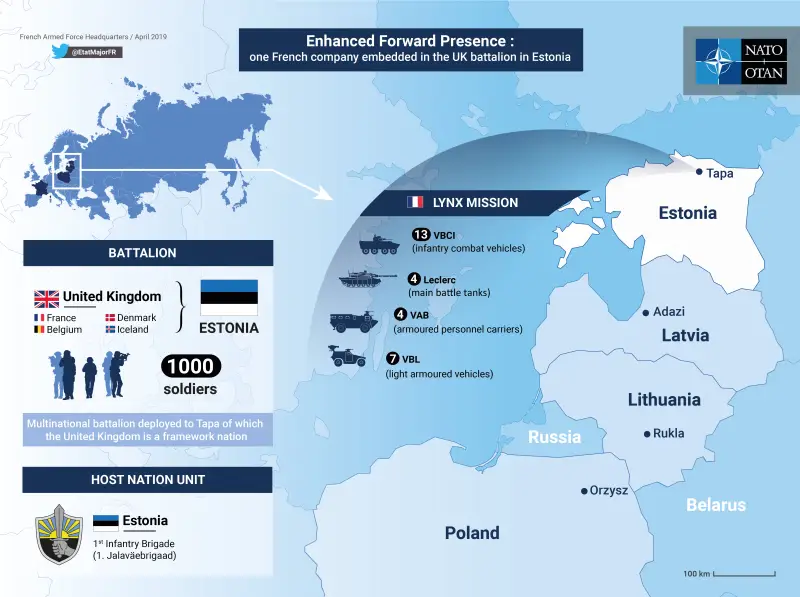
NATO infographics with one of the armored vehicles of the French contingent as part of the Lynx mission.
The French are participating in the formation of the BTG in Estonia with one of their company battle groups. Moreover, the mission is also considered as a training one, that is, Estonia has actually become a training ground for the French military to practice interaction with NATO colleagues, a training center for conducting combat operations in winter conditions, etc.
Accordingly, the composition of the French company battle group differs greatly from year to year. The French drove various variants of the GTIA and various units through Estonia. Plus, it all depends on what role the French component plays in the contingent; there were examples of the formation of a battle group around auxiliary units.
But most often the backbone of such a battle group is an infantry company (motorized rifle), tank company or light cavalry squadron (wheeled tanks AMX-10RC, now gradually being replaced by EBRC Jaguar). Naturally, if we are talking about a contingent of 1 “bayonets”, then, most likely, at least a battalion will act as a “skeleton” here, and the composition of the reinforcement units will be much more serious.
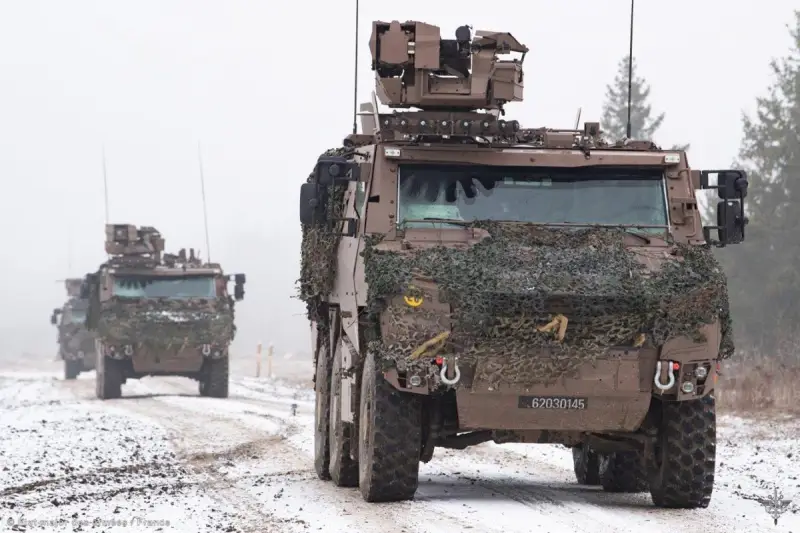
Column of French VBMR Griffons in Estonia. These vehicles are from one of the units of the Foreign Legion. This battle group consisted of elements of the 13th Demi-Brigade (13e DBLE), the 1st Foreign Cavalry Regiment (1er REC) and the 1st Foreign Engineer Regiment (1er REG).
Human and material resources
No matter how funny it may sound, 1 military personnel for the French Armed Forces is a lot. Yes, the French Armed Forces number just over 500 thousand military personnel, but this is all the armed forces, including the Navy, Air Force and National Gendarmerie. The same Foreign Legion is, according to various estimates, 200-7 thousand fighters.
It is not surprising that, apparently, it was not possible to assemble a contingent for Ukraine from the legion alone. 1 military personnel is an entire regiment of the Foreign Legion, and even with reinforcement units. It is doubtful that France will be able to allocate a fifth of the entire Foreign Legion for one mission.
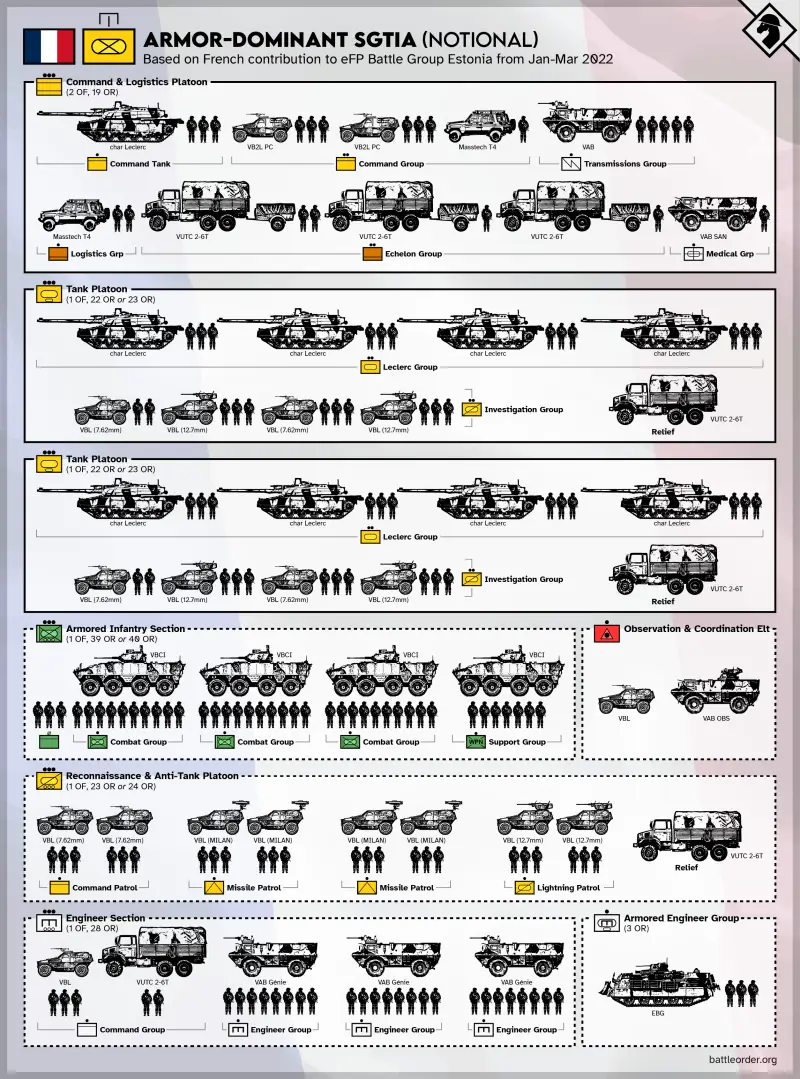
Detailed infographic illustrating the composition of the company battle group located in Estonia as part of Mission Lynx, from January to March 2022.
For example: the contingent of French troops withdrawn from Niger was several hundred soldiers smaller, and the entire French contingent in Afghanistan at the peak of its strength (the Lafayette brigade, with the Capisa and Surubi combat groups) amounted to less than three and a half thousand troops , and they kept this composition in the country for only three years, from 2009 to 2012. Already in 2013, there were less than 300 French troops in Afghanistan.
And the French neocolonial empire, so thoroughly destroyed by our diplomats and “musicians,” still exists and requires French bayonets to maintain. For example, earlier this year a company from the 13th Demi-Brigade of the Foreign Legion (13e DBLE) went to Djibouti. Plus overseas territories, plus current obligations as a NATO member, the same eFP mission.

French infantry training in an abandoned building, Estonia, 2023. Everything happens near the city of Tapa, at the training ground of the Estonian Defense Forces. In Soviet times, this was the territory of military unit 67665, in fact, and the building used to be part of a military camp.
Plus, in France there is an acute problem of outflow of personnel from the army.
In May 2023, the French newspaper Le Monde wrote about a report prepared for French parliamentarians, which spoke of an increasing number of reports of dismissal from the French armed forces and a shortage of personnel in many positions. Moreover, some servicemen did not even wait for the end of the official contract, but tore it up. Even a fine for unilateral termination of the contract and the loss of some benefits did not stop the French military.
Judging by the fact that in March 2024, hearings were held in the French Parliament on the introduction of additional incentives for military personnel, the situation has definitely not gotten better since last year.

The photo shows French mercenaries in Ukraine. Formally, France does not take part in the SVO with its military personnel. However, French mercenaries are actively operating in Ukraine... and are also actively being destroyed, as Vice-Speaker of the State Duma Pyotr Tolstoy recently recalled in an interview with a journalist from the French TV channel BFMTV. Maybe it will help sober up French politicians a little...
Among the main reasons for dismissals from the army are unfulfilled expectations from the service (army advertising often does not correspond to reality) and uncompetitive conditions compared to civilian work.
Be that as it may, it is not worth saying that it will be easy for the French to assemble a contingent to send to Ukraine. Talk about a contingent of twenty thousand is definitely pure unscientific fiction.
But they will find the resources to send one and a half thousand military personnel.
The only question is who will be part of this contingent, and whether sending troops so close to the combat zone of such a large conflict will be another incentive for many French people to say goodbye to their military careers.
Information